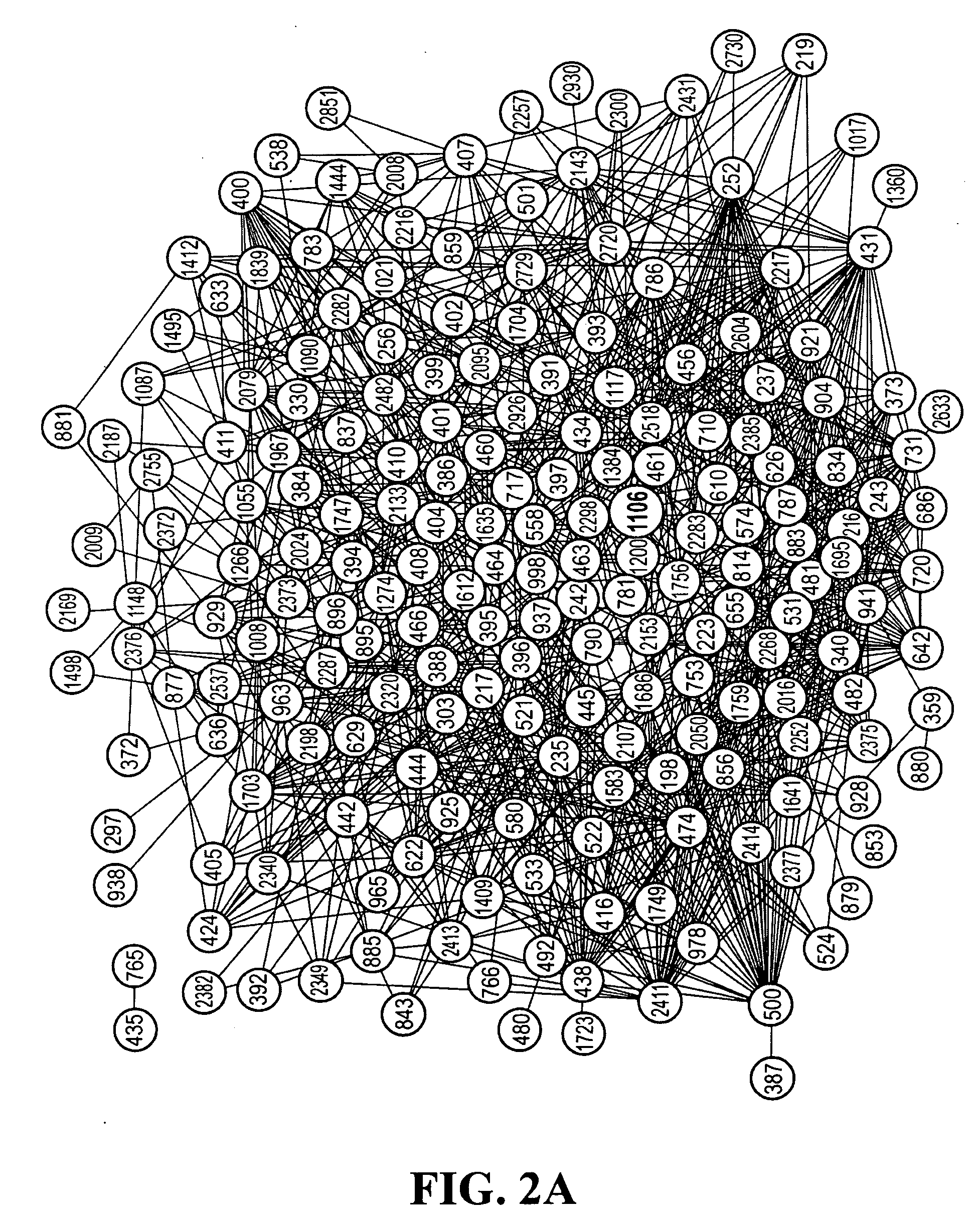Sequence covariance networks, methods and uses therefor
a covariance network and covariance technology, applied in the field of covariance network covariance network, methods and uses therefor, can solve the problems of patients' loss of effective therapies and the loss of viral population
- Summary
- Abstract
- Description
- Claims
- Application Information
AI Technical Summary
Benefits of technology
Problems solved by technology
Method used
Image
Examples
examples
[0044]Various aspects of the present teachings can be illustrated by the following non-limiting examples. The following examples are illustrative, and are not intended to limit the scope of the claims. The description of a composition or a method in an example does not imply that a described article or composition has, or has not, been produced, or that a described method has, or has not, been performed, except for results presented in past tense.
[0045]The methods described herein utilize laboratory techniques well known to skilled artisans, and guidance can be found in laboratory manuals such as Sambrook, J., et al., Molecular Cloning: A Laboratory Manual, 3rd ed. Cold Spring Harbor Laboratory Press, Cold Spring Harbor, N.Y., 2001; Spector, D. L. et al., Cells: A Laboratory Manual, Cold Spring Harbor Laboratory Press, Cold Spring Harbor, N.Y., 1998; and Harlow, E., Using Antibodies: A. Laboratory Manual, Cold Spring Harbor Laboratory Press, Cold Spring Harbor, N.Y., 1999, and textb...
example 2
[0054]This example illustrates identification of covarying amino acid positions in the HCV genome. To identify covarying amino acid positions in the HCV open reading frame, the inventors began by creating ten multiple sequence alignments: 1a-all, 1a-marked, 1a-poor, 1a-SVR, 1a-non-SVR, 1b-all, 1b-marked, 1b-poor, 1b-SVR, and 1b-non-SVR. A covariance score for every possible pair of positions in each alignment was calculated by squaring the difference between the number of observed and expected amino acid pairs and normalizing this difference by the number of entries (excluding gaps) in each column (OMES method) (Kass, I., and Horovitz, A., Proteins 48, 611-617, 2002). The null model in this analysis is the expected number of covarying pairs, which is based on the count of each amino acid at each of the two positions of each pair of positions. Therefore, two perfectly conserved columns will have a score of zero because the expected and observed numbers are equal. Covarying positions ...
example 3
[0057]This example illustrates that covarying positions form networks. Closer inspection of the covarying positions in the alignments revealed that one member of a covarying pair often covaried with one or more other positions in the genome. This led us to hypothesize that the covarying positions may be linked together into a network. To test this hypothesis, the inventors represented the covarying pairs as graphs. A graph is a collection of nodes (here, amino acid positions) connected by edges (represented as lines) if they display covariance.
[0058]Graphs were generated for the covarying positions in each of the response classes and rendered using Cytoscape (Shannon, P., et al., Genome Res. 13, 2498-2504, 2003) (FIGS. 2A and 2B). The graphs revealed that the covarying positions do indeed form networks because the covarying positions formed chains of interconnected residues. The networks all followed the inverse power law distribution, where the probability that any node has k edges...
PUM
| Property | Measurement | Unit |
|---|---|---|
| Length | aaaaa | aaaaa |
| Length | aaaaa | aaaaa |
| Length | aaaaa | aaaaa |
Abstract
Description
Claims
Application Information
 Login to View More
Login to View More - R&D
- Intellectual Property
- Life Sciences
- Materials
- Tech Scout
- Unparalleled Data Quality
- Higher Quality Content
- 60% Fewer Hallucinations
Browse by: Latest US Patents, China's latest patents, Technical Efficacy Thesaurus, Application Domain, Technology Topic, Popular Technical Reports.
© 2025 PatSnap. All rights reserved.Legal|Privacy policy|Modern Slavery Act Transparency Statement|Sitemap|About US| Contact US: help@patsnap.com



